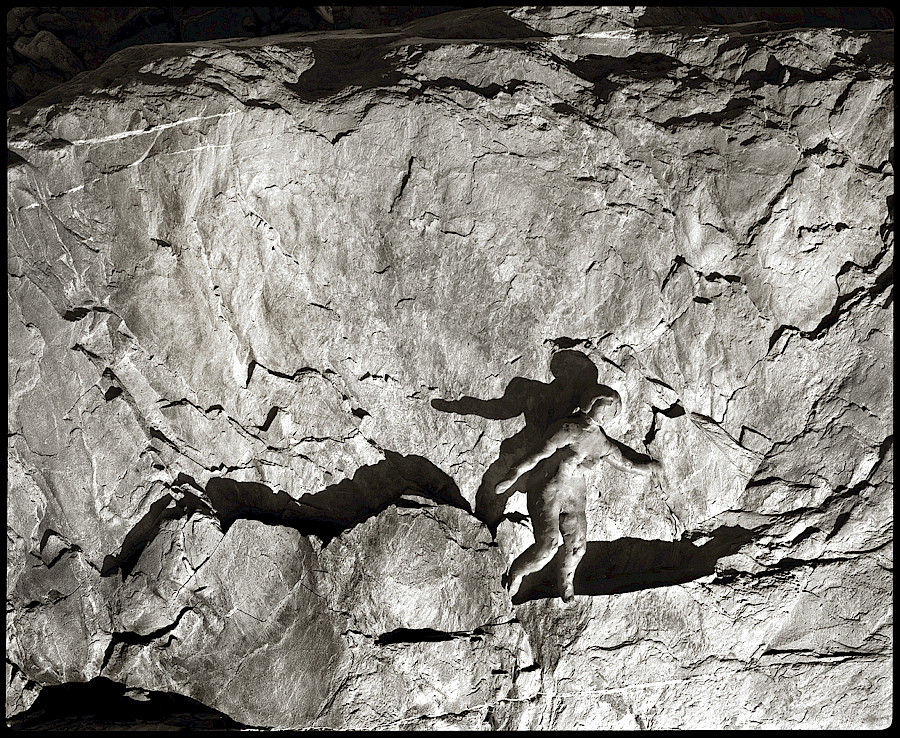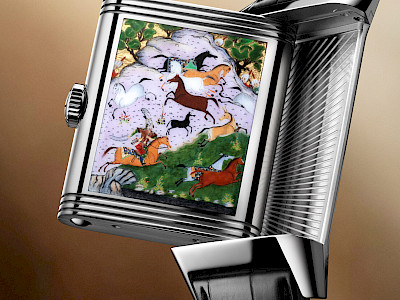
Woman. Overcoming the path. Kish, 2019
For Sanan Aleskerov, photography is far more than a profession – it’s a way of life, a passion that runs deep. His journey began in Icherisheher, the historic heart of Baku, where every stone and shadow holds a story. Aleskerov’s impressive career spans international exhibitions, state honors, and the respect of his peers. Many of his students have become some of Azerbaijan’s most sought-after visual storytellers, carrying forward his legacy of capturing beauty and meaning in every frame.

Cultural layers. City. Baku, 2018

The Painted Wall. Baku, 2019

The Observer, Baku 2020
What new themes or motifs have emerged in your work recently?
I have been living in the ancient village of Kish, located in Sheki, for the past three years. Even before that, I had started to feel less inclined to photograph in the city. The freedom I had once envisioned was no longer present, especially after the pandemic and all that followed. As a result, I started to reflect on themes such as the concept of culture. Over time, I developed a central theme around nature and culture, which I have explored for many years. Culture encompasses everything that humanity has created: relationships between people, homes, cities, history, literature, and work. I have observed how intricately all these elements are interwoven. I felt the need to be closer to nature as I began to grasp the ideality of the Divine. However, in culture, there are many things that people either accept or reject, desire or disdain. What benefits some nations may be detrimental to others. I’m not referring to individuals here; each person is entirely unique, as stated in the Qur’an. Moreover, when we consider people and their activities, we see both the genius created by humankind and, simultaneously, destructive tendencies that can lead to self-destruction. This is the most significant theme I have been exploring for the past five years. I have carefully compiled and printed a small photographic album titled «Nature and Culture: Observations», which has been proofed and printed in a single copy in the United States. I hope it will eventually be published for the general public. However, this does not signify that my research on the subject is complete.
How do you envision your legacy as a photographer?
The message I’m sending to humanity is basically to cut through human loneliness. To say that we are one. We are one with nature. God created us all the same. We are not alone. I would like people to recognise the importance of loving everything around them.
What message or insight would you like to pass on to future generations through your work?
Photography is unique; its strength lies in its documentary nature. A true documentary photograph declares, «I am and this is true». Of course, it depends on your perspective, how you approach things, and your attitude towards certain subjects. The documentary essence of photography gives you the power to recognise that it is authentic, something you cannot necessarily claim about painting, film, or literature, where there is much more personal authorship and interpretation. One of my goals is to reconnect people with nature through photography. My mission is to see beauty – not only the beauty of landscapes, leaves, flowers, and people but in everything that God has created.
For instance, man should recognise the beauty of a river and understand that polluting it is simply unthinkable. We must appreciate water and understand that we are made of it. Without it, the Earth cannot exist. If I show the beauty of cataclysms or the dangers that nature presents, people will reconsider their sense of self-assurance. Why thoughtlessly cut down forests and use them as firewood when we can harness energy from the air and the Sun? We must take care of nature and its beauty. It is not only our home but also the home of animals and birds. We have no right to destroy it. Understanding beauty is what makes us human. Photography can serve as a reminder that beauty and culture surround us, and it holds the power to convey the importance of preserving nature instead of destroying it carelessly.
Having transitioned from the bustling city of Baku to the tranquillity of a quiet village, how has this change in an environment influenced your creative process?
Here you’re not in a hurry; you have time to think and aren’t rushing anywhere. The weather is very unpredictable – today it’s warm and tomorrow it can be stormy and windy. I can focus on my work, which is centred on observation. I observe and record my thoughts, my vision, and my understanding of things.
You’ve mentioned that Icherisheher in Baku is your favourite spot and a place of power. Have you discovered any equally inspiring locations in Kish?
I still love Icherisheher. I was born there, on Muslim Magomaev Street, where my grandfather had a two-storey house. This place is dear to me. Baku is like a magnet. Kish, however, is the place where I built my house – my photographic gallery and called it «YER». I held my first retrospective exhibition alongside my wife, Eva Abilova, a talented photographer. I entered this business with deep roots and this place is my home; today it is a place of strength. «YER» is like a globe, the place where my works live. People are often surprised to discover a modern gallery, high up on the mountain, in such an unexpected location. I designed it myself, made the frames myself, did everything myself – and it’s wonderful. It might seem that, after moving here, there are more household tasks, but I am interested in it all.
What does success in photography mean to you, and has your definition of success evolved since relocating?
The success of any photography in contemporary art, used to be something I took very seriously, even painfully. I participated in different competitions, at first, I didn’t pass, but then I started receiving medals at international competitions, both gold and silver, in about 18 countries. Then I realised that all this was empty because you have to work not to please the jury at some symposium, but to please yourself, and not rest on what you have already achieved. But when I built the gallery, I realised that I wasn’t just working for myself. I understood many things. I explain a lot to many people, including my students and viewers who come and wonder. People often ask me what I am doing here. I am working here, closer to what interests me. And if the viewer is engaged, empathy – that is, «сontact» – follows.

Geometry of Lines. Baku , 2017

Still life. Kish, 2023
I felt the need to be closer to nature as I began to grasp the ideality of the Divine.

Shelters. March. Kish, 2018

The Mountain Line. Kish, 2023

Winter. Staircase to the Garden. Kish, 2023

Endless Reflections. Kish, 2023

Stopping Time. Kish, 2023

The tree root is powerful.

The borderland life of trees. Khanabad, 2022

Solar Rotation. Kish, 2023

Gobustan. Space of established stones.



